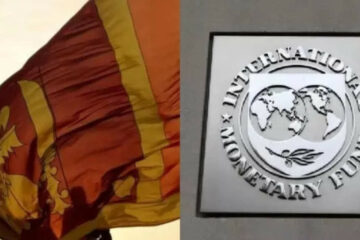[ad_1]
Wheat price touched new highs of Rs 2,650 on October 21. Prices would trade bullish in the price band of Rs 2,600-2,700 in the short-term Target Price Rs 2,557.
Most recently, with firm demand for wheat and wheat products ahead of the festive season, wheat prices gained by 5 per cent from month-to-date and 2 per cent from the last week. Domestic supplies remain tight due to lower production this year coupled with strong
exports. The millers are struggling to get sufficient wheat supplies in order to run their mills. As the open market sales scheme was paused this year the millers are not even able to buy from the central pool as they did in earlier years.
The central pool stocks of wheat as of October 1 were 22.74 MMT, down by 51.5% YoY and 8.4% MoM. However, wheat stocks are still at a comfortable level as the stock remains 2.22 MMT higher than the buffer limit of 20.52 MMT as of October 1.
As per our estimates, the carryover stocks by the end Mar 2023 would be around 10.5 MMT down by 45% year-over-year. On the other hand, despite lower production, the private traders hold a good amount of stock this year. The stock with them is almost similar to last year’s level and by the end of March 2023, we expect around 1.5 MMT stocks to be left with the private trade.

The central government banned wheat exports on May 13 to secure supplies for domestic consumption at a time when Indian wheat production was impacted by above-normal temperatures during the harvest period which dragged the production to 12 MMT lower than the previous year.
Food Corporation of India (FCI) was unable to procure even 50% of its procurement target as domestic prices were 12% higher than the minimum support price of Rs 2,015 per quintal for the 2022-23 season. Thereafter, the government also banned wheat flour and products exports on Aug 25th to cap the domestic wheat prices.
Wheat exports from India got boosted during the Russia-Ukraine war which created supply-chain bottlenecks thus disrupting supplies. This gave an opportunity to India to export wheat to Asia and Middle-east nations. Wheat and wheat products exports from India from April to September 2022 were 5.30 MMT, up by 2.62 MMT from the previous year. India exported around 2.4 MMT of wheat till September 30 after the ban.
The major export origins of wheat are – Bangladesh with 1.29 MMT, Indonesia 0.81 MMT, South Korea 0.50 MMT, UAE 0.46 MMT, Yemen 0.25 MMT, Thailand 0.21 MMT, Philippines 0.18 MMT, Oman 0.14 MMT, and Sri Lanka 0.12MMT.
Meanwhile, on October 14, the government allowed wheat flour (atta) export on the condition that it has to be processed from imported wheat under the Advance Authorisation Scheme by 100% export-oriented units (EOUs) or factories located in special economic zones (SEZ).
The export of atta by these units will be subject to pre-import of wheat conditions. The atta will have to be exported within 180 days from the date of import of the wheat consignment. Further, the entire production of the milling process has to be exported. This policy would give a boost to the Indian millers to run their mills.
The new wheat crop sowing would commence post-Diwali and we expect the area would increase by around 8-10% as prices remained lucrative throughout the year and the realization was good as compared to other rabi crops such as chana or mustard. On top of that, the Government has increased Wheat MSP by Rs 110 per cent quintal to Rs 2,125 per quintal.
Hence, going ahead we expect prices may correct gradually due to a slump in demand post-Diwali coupled with traders liquidating their old stocks as the new wheat crop sowing season kicks off by Oct end. If prices close below target price Rs 2,557 then it may resume weakness for the medium term.
(The author, Indrajit Paul, is Senior Manager, Origo Commodities)
[ad_2]


